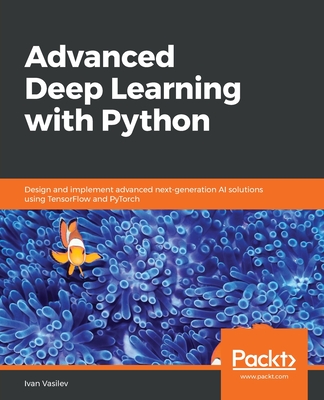Introduction to Graph Neural Networks
暫譯: 圖神經網絡入門
Liu, Zhiyuan, Zhou, Jie
- 出版商: Morgan & Claypool
- 出版日期: 2020-03-20
- 售價: $2,410
- 貴賓價: 9.5 折 $2,290
- 語言: 英文
- 頁數: 127
- 裝訂: Hardcover - also called cloth, retail trade, or trade
- ISBN: 1681737671
- ISBN-13: 9781681737676
海外代購書籍(需單獨結帳)
商品描述
Graphs are useful data structures in complex real-life applications such as modeling physical systems, learning molecular fingerprints, controlling traffic networks, and recommending friends in social networks. However, these tasks require dealing with non-Euclidean graph data that contains rich relational information between elements and cannot be well handled by traditional deep learning models (e.g., convolutional neural networks (CNNs) or recurrent neural networks (RNNs)). Nodes in graphs usually contain useful feature information that cannot be well addressed in most unsupervised representation learning methods (e.g., network embedding methods). Graph neural networks (GNNs) are proposed to combine the feature information and the graph structure to learn better representations on graphs via feature propagation and aggregation. Due to its convincing performance and high interpretability, GNN has recently become a widely applied graph analysis tool.
This book provides a comprehensive introduction to the basic concepts, models, and applications of graph neural networks. It starts with the introduction of the vanilla GNN model. Then several variants of the vanilla model are introduced such as graph convolutional networks, graph recurrent networks, graph attention networks, graph residual networks, and several general frameworks. Variants for different graph types and advanced training methods are also included. As for the applications of GNNs, the book categorizes them into structural, non-structural, and other scenarios, and then it introduces several typical models on solving these tasks. Finally, the closing chapters provide GNN open resources and the outlook of several future directions.商品描述(中文翻譯)
圖形是複雜現實應用中有用的資料結構,例如建模物理系統、學習分子指紋、控制交通網絡以及在社交網絡中推薦朋友。 然而,這些任務需要處理包含元素之間豐富關聯資訊的非歐幾里得圖形資料,而傳統的深度學習模型(例如,卷積神經網絡 (CNNs) 或遞迴神經網絡 (RNNs))無法很好地處理這些資料。圖形中的節點通常包含有用的特徵資訊,而在大多數無監督表示學習方法(例如,網絡嵌入方法)中無法得到良好的處理。圖形神經網絡 (GNNs) 被提出來結合特徵資訊和圖形結構,通過特徵傳播和聚合來學習更好的圖形表示。由於其令人信服的性能和高可解釋性,GNN 最近成為廣泛應用的圖形分析工具。
本書提供了圖形神經網絡的基本概念、模型和應用的全面介紹。它首先介紹了基本的 GNN 模型。接著介紹了幾種基本模型的變體,例如圖形卷積網絡、圖形遞迴網絡、圖形注意力網絡、圖形殘差網絡以及幾個通用框架。還包括針對不同圖形類型的變體和先進的訓練方法。至於 GNN 的應用,本書將其分類為結構性、非結構性和其他場景,然後介紹幾個解決這些任務的典型模型。最後的章節提供了 GNN 的開放資源以及幾個未來方向的展望。





























